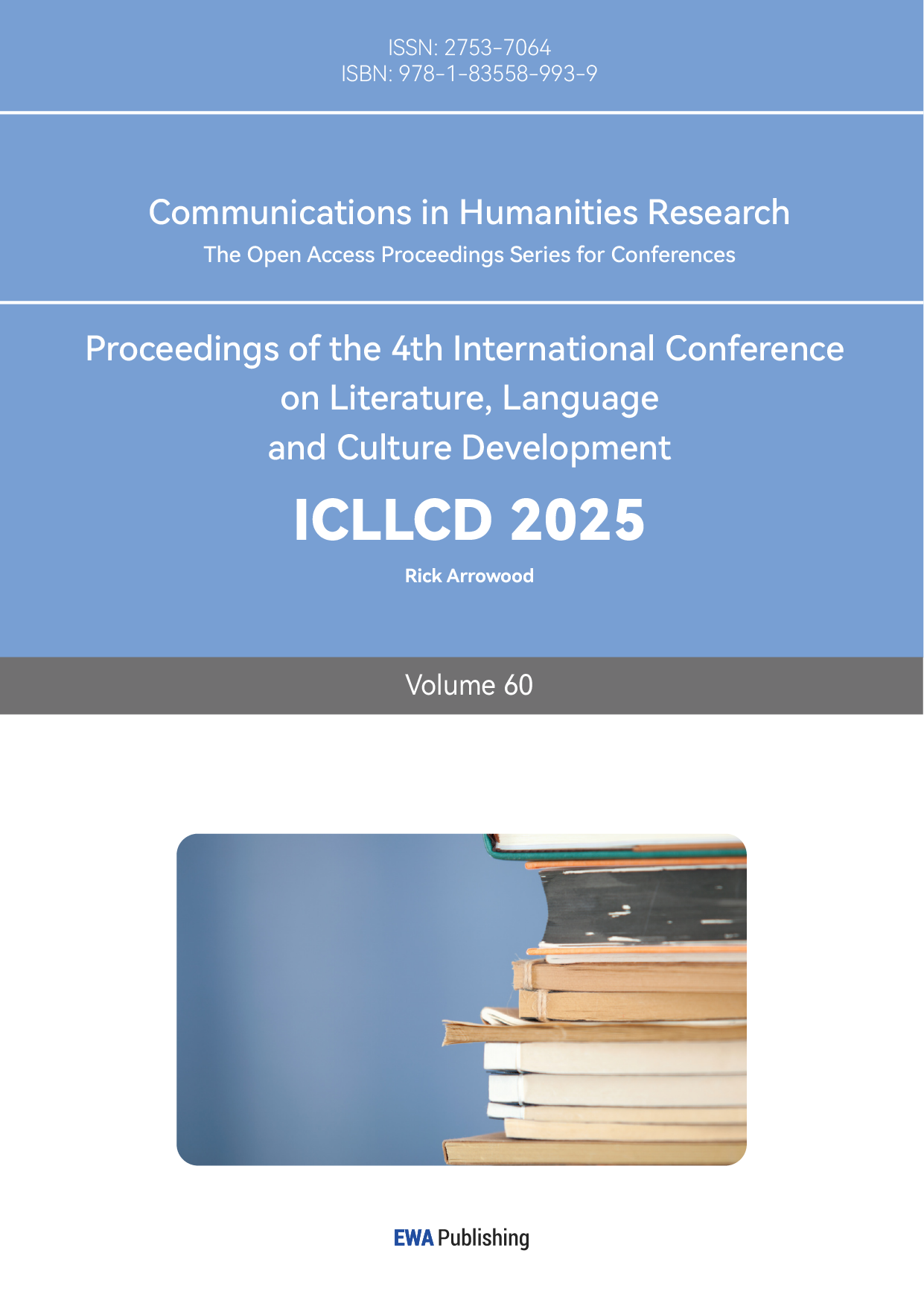1. Introduction
According to the existing relevant definition of urban shrinkage, shrinking cities are urban areas that have experienced significant population loss, economic decline, and social challenges due to deindustrialization, suburbanization, or other structural shifts [1]. Many industrial cities are in the process of shrinking after a period of rapid and dynamic development. Profound population losses have been reported from numerous old-industrial locations throughout Europe and North America, but also from Japan, Australia, Russia, and other regions [2]. Amongst others, these concepts were typically related to specific national contexts, installed in distinct explanatory frameworks, based around diverging normative accounts, ultimately leading to very different policy implications [3].
In China, many cities are also experiencing shrinkage, mostly in the northeast. It's important to note that, as different regions have their factors and characteristics conducive to urban development, they have their development patterns, like mining-led or manufacturing-led. However, there is a lack of research to confirm how urban shrinkage is related to different development patterns and how to curb or reverse this shrinking trend through feasible behaviors. By comparative analyses, this research examines various cases of effective responses to urban shrinkage around the world. At the same time, this study provides feasible recommendations and solutions to promote urban development, effectively preventing urban shrinkage in its early stages, enhancing urban livability and improving the human environment while developing the urban economy.
2. Comparison between Two Different Shrinkage
Figure 1 shows shrinking cities in China are clustered in the northeast region. Interestingly, despite the presence of many cities with growing populations in the eastern part of the country, there remain instances of population decline in certain areas. In response to these two distinctive features, this research selected two typical cities from these two regions, Jixi and Wenzhou, as research samples to explore the correlations and differences between the two types of urban shrinkage.
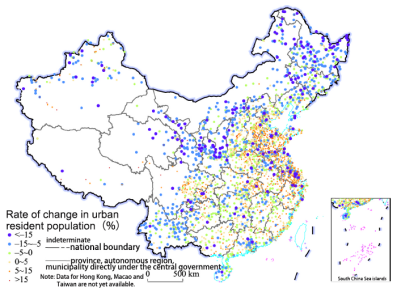
Figure 1: Change rate of permanent population in 3022 physical cities in China from 2016 to 2018 [4]
2.1. Subjects
Jixi is located in the southeastern part of Heilongjiang Province. It was founded in 1957 with an area of 22,500 square kilometres. It is the first of the four coal cities in Heilongjiang Province and an important coal production base in China. Wenzhou is located in the southeastern part of Zhejiang Province, known as the “cradle of China's private economy.” It is known for its Wenzhou businessmen all over the world and its strong entrepreneurial spirit.
(a) | (b) |
Figure 2: (a) population changes in Jixi [5] (b) population changes in Wenzhou [6]
According to Figure 2a, it is evident that Jixi has experienced a long-term and serious population decline, almost 15% decrease compared to 2000. While for Wenzhou, Figure 2b shows that the decline in the population has occurred only in recent years and at a slower rate, with a fall of 0.4%.
2.2. Analysis of Urban Characteristics
This research aims to find the potential causes of urban shrinkage by comparing the factors associated with urban development. From these causes, it will qualify the direction for the subsequent provision of solutions.
2.2.1. Comparison of Economic Structure and Industrial Characteristics
Jixi used to be an important energy base in New China. Since 1949, a total of 1.06 billion tons of coal have been supplied nationally. Additionally, as is illustrated in figure 3, until recent years, the heavy industry (mining industry, process industry, etc.) still dominated the whole industrial output values. This indicates Jixi's shrinkage stems from a resource-dependent mono-industrial economy and low-value industrial structure.
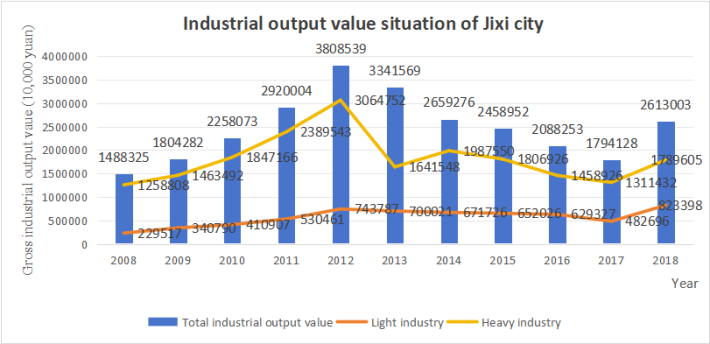
Figure 3: the industrial output value situation of Jixi city (2008-2018) [5]
While for Wenzhou, the dominant industry is the fashion manufacturing industry, which relies on low-value mass-production models in the long term. There are 8,165 shoe leather enterprises and 2,731 garment enterprises in Wenzhou, and the total output value of the textile industry exceeded 200 billion yuan [6]. However, there are still problems with the development of the industry. The lag in industrial upgrading and insufficient research and development (R&D) investment has led to a decline in competitiveness. Compared with other cities in Zhejiang province, as is illustrated in Figure 4, it is obvious that the R&D expenditure of Wenzhou is far less than the other two cities.
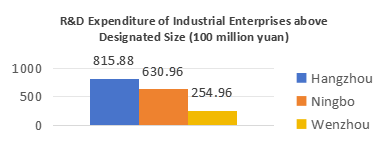
Figure 4: R&D Expenditure of Industrial Enterprises above Designated Size (100 million yuan) [6]
2.2.2. The Pursuit of Livability
For Jixi, geographically, it is located in the Chinese northeast region, where the overall development environment is constrained. According to Figure 5, as more and more mining plants shut down and lose money, a large number of workers face unemployment and challenges to their economic livelihoods. In addition, this research finds that the public services are insufficient as well. Figure 6 shows that the number of beds, doctors, and nurses, respectively, is much less than in other cities. Another factor driving the population loss is the poor air quality. It is known that the national standard for PM2.5 concentration is set at 35 or less, as is illustrated in Figure 7, while the PM2.5 concentration index in Jixi City once reached 40 in 2017.
Figure 5: Number of loss-making enterprises in Jixi [5]
Figure 6: Comparison of medical resources in Jixi and other cities [5]
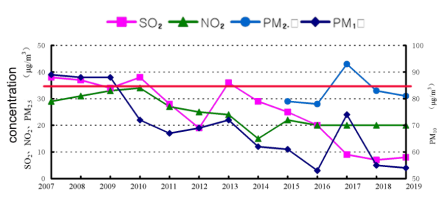
Figure 7: Air quality in Jixi City [7]
For Wenzhou, the most important factor is the income. As it is in the Yangtze River Delta region, which is experiencing rapid economic and technological development, the general environment is highly competitive. According to Figure 8a and 8b, whether it is disposable income per capital or GDP per capital, Wenzhou's values are smaller than those of other cities in the province. Especially the young generation would be attracted to high-paying positions easily for a more high-quality life.
Figure 8: (a) Per Capital Disposable Income (b) Per capital gross domestic product of Wenzhou [6]
2.2.3. Policy Intervention Mechanism
For Jixi, it relies on centralised transfusion aid. In 2024, the central government allocated 4332.49 million yuan to Jixi City for urban development, which is mainly for healthcare, resettlement of laid-off workers and infrastructure maintenance [8]. However, this study concludes that it lacks endogenous blood-supply capacity. Mining is weak, and new industries are not on the horizon.
For Wenzhou, it attempts to upgrade public services through private capital feedback, which is manifested by private enterprises donating funds to build schools and run medical centres. The leading role of private industry has been strengthened, with the added value of the private sector regularly increasing by 9.9% over the previous year, contributing 94.5% to the growth of industry on a regular basis [9]. However, policy barriers, which means land indicators tilted towards the provincial capital, limit the space for industrial expansion.
3. Feasible Suggestions and Solutions
Given the different types of urban shrinkage and in the context of China's social development, this study provides recommendations and solutions for the two research subjects, Jixi City and Wenzhou City. Meanwhile, it refers to some relevant cases of urban governance worldwide for feasibility.
3.1. Solutions for Jixi City
Based on the analyses above, this study concludes that urban shrinkage in Jixi City is a resource depletion type of shrinkage. The initial development of the city depended on coal mining, and with the exhaustion of mineral resources, the development in the middle and late stages of the city has shown an obvious weakness and declining trend. According to this phenomenon and the reasons, this study puts forward the following suggestions for reference.
3.1.1. Industrial Restructuring--Vertical extension of the Industrial Chain
Resource-exhausted cities evoke the Ruhr area in Germany, which shares mineral resource depletion. Both share the same depletion of mineral resources. The Ruhr area is a famous and reputable case of a successful transition out of economic crisis. For the Ruhr area, more than before, emphasis was now laid on the development of new, future-oriented branches of economic activity around the old industries in the region [10].
Similarly, for Jixi City, it’s crucial to develop high-end manufacturing such as graphene and lithium battery anode materials. There are 66 graphite production enterprises in Jixi City, including 35 enterprises above scale. The city's annual graphite ore processing capacity of 7.5 million tonnes, concentrate powder capacity of 620,000 tonnes [9]. Although, according to the report, Jixi City has embarked on developing the graphite industry, it has yet to form a larger scale and brand. Therefore, this study suggests establishing graphite industry research institutes, such as the Fraunhofer Institute model in the Ruhr area, attracting institutions such as the Chinese Academy of Sciences (CAS) and the Harbin Institute of Technology (HIT) to jointly attack the problem.
3.1.2. Improvement of Public Services
In terms of upgrading public services, joining forces with the province's colleges and universities will be a good option. Higher education institutions (HEIs) are expected to fulfil their traditional missions—teaching and research, and in addition undertake new ones that reflect economic, social and cultural contributions to regional evolution [11]. To a certain extent, universities imply abundant human resources and a sufficient reserve of advanced productivity.
Based on the analysis of the current healthcare situation in Jixi City, this study suggests the establishment of a hospital affiliated with Harbin Medical University under rational urban planning and the setting up of supporting regional medical centres in each community. At the same time, in order to better enhance the educational resources of Jixi City and retain talents, the Jixi government is suggested cooperating with Northeast Petroleum University to establish a major in graphite materials and provide relocation subsidies for local employment of graduates.
3.1.3. Policy Breakthrough--Government Grant
Since the city of Jixi also receives grant aid from the central government, it is not difficult to associate it with the federal empowerment zone policy of the United States. Ham et al. found that Federal Empowerment Zones (EMPZs) program has positive, statistically significant, impacts on local labor markets in terms of the unemployment rate, the poverty rate, the fraction with wage and salary income, and employment [12]. This study is sceptical about Jixi City's practice of allocating funds mainly for medical care, resettlement of laid-off workers, and infrastructure maintenance.
Concerning the practice in Philadelphia, USA, it has delineated three zones for different aspects of financial assistance, namely The Business Assistance Grant, The Beautification Grant, and The Nonprofit Capital Grant. This paper thought Jixi could also allocate its grant aid in these three areas. For business assistance, it could be mainly used to help support some emerging industries and enterprises in high-end research and development. For beautification, the grants can be used to improve community habitat and air quality and are intended to enhance local livability. Lastly, nonprofit capital could be used to build several new infrastructures not only for maintenance.
3.2. Solutions for Wenzhou City
Based on the analyses of Wenzhou City, this study proposes redefining its shrinkage as industrial lag. Due to the long-term reliance on low value-added industrial chain production and the lack of investment in science and technology and design, the city has gradually lost its competitiveness in the market. Based on these reasons, this study gives the following suggestions.
3.2.1. Breakthrough in Industry--Value Chain Ascent
Wenzhou has a lot of once-famous clothing brands like Aokong and Red Dragonfly, but in recent years, they have gradually lost competitiveness in the market. On the contrary, some brands have broken through to take their place firmly in the market. Anta has achieved some success in the Chinese market with setting up experimental facilities such as the sports science laboratory, testing laboratory and hoped that by strengthening its investment in technology and R&D, it could completely change from its previous image in the minds of consumers [13].
Therefore, this study argues that these Wenzhou apparel brands can promote their transition from Original Equipment Manufacture (OEM) to Original Design Manufacture (ODM) by following the Anta model. By establishing a footwear industrial design center and increasing investment in research and development, these brands could effectively ascent their value chain and renew their reputation and word-of-mouth among consumer groups. At the same time, this practice creates more high-paying jobs requiring higher skills, which is conducive to attracting more talent.
3.2.2. Driving Investment through Government Fund to Attract Business
The city of Hefei in Anhui Province has been developing science and technology and technology-intensive industries in recent years in its original way the "Hefei model". The state capital is directly invested in leading enterprises of emerging industries that are viewed as strategically important but often considered by private investors as too risky or costly [9]. Many Wenzhou business like Chint Group and Vipshop (online retailer), as they expanded, moved their headquarters to regions like Hangzhou and Guangzhou. Learning Hefei’s experience, Wenzhou could establish a new kinetic energy investment fund, directed to participate in the return from Hangzhou to relocate the Wenzhou business enterprises (such as Chint Group's new energy plate), requiring its R&D department to stay in Wenzhou to promote R&D investment in Wenzhou City.
3.2.3. Private Capital Activation
For the sake of better perfecting the whole process of the industrial chain and retaining more talents, Wenzhou groups can give full play to their unique industrial advantages and independently create opportunities to cultivate and utilize talents.
This study recommends that Wenzhou City upgrade existing private hospitals and schools by allowing private enterprises, such as Huafeng Group, which specializes in material production, to operate tertiary specialized hospitals in fields like orthopaedics and ophthalmology. These hospitals should offer health insurance reimbursement rates aligned with those of public hospitals and utilize advanced medical devices. Additionally, this study suggests supporting Senma Group to start a clothing industry college, cooperating with Ningbo University's clothing and apparel design programme, and incorporating it into the provincial higher education system. In this way, the Senma group could cultivate its high-quality talents and retain them from the start.
4. Conclusion
Unlike other cities in the world, such as Detroit, which faced municipal project deficits and financial crises leading to urban bankruptcy. The decline of the two Chinese cities, Jixi and Wenzhou, is due to underlying issues that arose during their industrial development. Jixi represents the shrinkage of most cities in Northeast China due to resource depletion and the failure of new industries to scale up, while Wenzhou represents the shrinkage of cities in East China due to lagging industries in an environment of rapid development. In summary, this article can also categorize these two types of atrophy as dependent and entrepreneurial because their different shrinkage causes and solutions. It is important to note that both these two cities ought to search for alternative emerging industries or promote the upgrading of existing industries positively. At the same time, these conducts would improve livability and community vitality, meeting residents' pursuit of a better life to a certain extent. This will be a win-win outcome.
The statistical data and the current situation of each city element in this study are all derived from the website, which is a deficiency of this study as it does not involve an in-depth investigation of the two cities under study. In the future, this research will invest more in urban health and sustainable development, and endeavour to conduct in-depth investigations and research in the cities we visited. Looking ahead, the industry will focus more on shrinking cities and devote more research and effort to solving the problem.
References
[1]. Schilling, J., & Logan, J. (2008). Greening the Rust Belt: A Green Infrastructure Model for Right Sizing America’s Shrinking Cities. Journal of the American Planning Association, 74, 451-466. https://doi.org/10.1080/01944360802354956
[2]. Oswalt, P., & Rieniets, T. (2006). Atlas of shrinking cities. Environment and Planning A, 46, 1519-1534.
[3]. Haase, A., Rink, D., Grossmann, K., Bernt, M., & Mykhnenko, V. (2014). Conceptualizing Urban shrinkage. Environment and Planning a, 46(7), 1519-1534.
[4]. Meng, X., Ma, S., Xiang, W., Kan, C., Wu, K., & Long, Y. (2021). Classification of shrinking cities in China using Baidu big data. Acta Geographica Sinica, 76(10), 2477-2488. https://doi.org/10.11821/dlxb202110010
[5]. Jixi Statistical Yearbook. (2023). Jixi City People's Government. Retrieved from https://www.jixi.gov.cn/jixi/c100333/202406/c06_299158.shtml
[6]. Wenzhou Statistical Yearbook. (2024). Wenzhou City People's Government. Retrieved from https://www.wenzhou.gov.cn/col/col1229696377/index.html
[7]. Jixi Municipal Government. (n.d.). Welcome to Jixi. Retrieved from https://www.jixi.gov.cn/jixi/c100050/zjjx.shtml
[8]. Jixi municipal government budget public (2024). Jixi City People's Government. Retrieved from https://www.jixi.gov.cn/jixi/c100345kr/202402/c06_286857.shtml
[9]. Wenzhou Bureau of Statistics. (2024). Wenzhou economic operation rebound and high-quality development achievement. Retrieved from https://wztjj.wenzhou.gov.cn/art/2024/1/25/art_1229429195_4218999.html
[10]. Hospers, G. J. (2004). Restructuring Europe’s rustbelt: The case of the German Ruhrgebiet. Intereconomics, 39(3), 147-156.
[11]. Trippl, M., Sinozic, T., & Lawton Smith, H. (2015). The Role of Universities in Regional Development: Conceptual Models and Policy Institutions in the UK, Sweden and Austria. European Planning Studies, 23(9), 1722-1740. https://doi.org/10.1080/09654313.2015.1052782
[12]. Ham, J.C., & Swenson, C.W. (2011). Government programs can improve local labor markets: Evidence from State Enterprise Zones, Federal Empowerment Zones and Federal Enterprise Community. Journal of Public Economics, 95, 779-797.
[13]. Yang, Y. (2022). Analysis of the brand image transformation of Chinese sportswear and sports shoe brands-Based on the cases of Li Ning and Anta. Academic Journal of Business & Management.
Cite this article
Gan,X. (2025). China's Shrinkage Varieties: Addressing Long-Term and Recent Population Loss in Eastern and Northeastern Regions. Communications in Humanities Research,60,45-51.
Data availability
The datasets used and/or analyzed during the current study will be available from the authors upon reasonable request.
Disclaimer/Publisher's Note
The statements, opinions and data contained in all publications are solely those of the individual author(s) and contributor(s) and not of EWA Publishing and/or the editor(s). EWA Publishing and/or the editor(s) disclaim responsibility for any injury to people or property resulting from any ideas, methods, instructions or products referred to in the content.
About volume
Volume title: Proceedings of the 4th International Conference on Literature, Language, and Culture Development
© 2024 by the author(s). Licensee EWA Publishing, Oxford, UK. This article is an open access article distributed under the terms and
conditions of the Creative Commons Attribution (CC BY) license. Authors who
publish this series agree to the following terms:
1. Authors retain copyright and grant the series right of first publication with the work simultaneously licensed under a Creative Commons
Attribution License that allows others to share the work with an acknowledgment of the work's authorship and initial publication in this
series.
2. Authors are able to enter into separate, additional contractual arrangements for the non-exclusive distribution of the series's published
version of the work (e.g., post it to an institutional repository or publish it in a book), with an acknowledgment of its initial
publication in this series.
3. Authors are permitted and encouraged to post their work online (e.g., in institutional repositories or on their website) prior to and
during the submission process, as it can lead to productive exchanges, as well as earlier and greater citation of published work (See
Open access policy for details).
References
[1]. Schilling, J., & Logan, J. (2008). Greening the Rust Belt: A Green Infrastructure Model for Right Sizing America’s Shrinking Cities. Journal of the American Planning Association, 74, 451-466. https://doi.org/10.1080/01944360802354956
[2]. Oswalt, P., & Rieniets, T. (2006). Atlas of shrinking cities. Environment and Planning A, 46, 1519-1534.
[3]. Haase, A., Rink, D., Grossmann, K., Bernt, M., & Mykhnenko, V. (2014). Conceptualizing Urban shrinkage. Environment and Planning a, 46(7), 1519-1534.
[4]. Meng, X., Ma, S., Xiang, W., Kan, C., Wu, K., & Long, Y. (2021). Classification of shrinking cities in China using Baidu big data. Acta Geographica Sinica, 76(10), 2477-2488. https://doi.org/10.11821/dlxb202110010
[5]. Jixi Statistical Yearbook. (2023). Jixi City People's Government. Retrieved from https://www.jixi.gov.cn/jixi/c100333/202406/c06_299158.shtml
[6]. Wenzhou Statistical Yearbook. (2024). Wenzhou City People's Government. Retrieved from https://www.wenzhou.gov.cn/col/col1229696377/index.html
[7]. Jixi Municipal Government. (n.d.). Welcome to Jixi. Retrieved from https://www.jixi.gov.cn/jixi/c100050/zjjx.shtml
[8]. Jixi municipal government budget public (2024). Jixi City People's Government. Retrieved from https://www.jixi.gov.cn/jixi/c100345kr/202402/c06_286857.shtml
[9]. Wenzhou Bureau of Statistics. (2024). Wenzhou economic operation rebound and high-quality development achievement. Retrieved from https://wztjj.wenzhou.gov.cn/art/2024/1/25/art_1229429195_4218999.html
[10]. Hospers, G. J. (2004). Restructuring Europe’s rustbelt: The case of the German Ruhrgebiet. Intereconomics, 39(3), 147-156.
[11]. Trippl, M., Sinozic, T., & Lawton Smith, H. (2015). The Role of Universities in Regional Development: Conceptual Models and Policy Institutions in the UK, Sweden and Austria. European Planning Studies, 23(9), 1722-1740. https://doi.org/10.1080/09654313.2015.1052782
[12]. Ham, J.C., & Swenson, C.W. (2011). Government programs can improve local labor markets: Evidence from State Enterprise Zones, Federal Empowerment Zones and Federal Enterprise Community. Journal of Public Economics, 95, 779-797.
[13]. Yang, Y. (2022). Analysis of the brand image transformation of Chinese sportswear and sports shoe brands-Based on the cases of Li Ning and Anta. Academic Journal of Business & Management.





